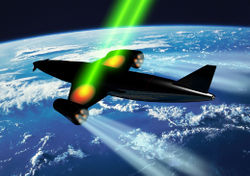Difference between revisions of "design to cost"
(update) |
|||
| Line 42: | Line 42: | ||
April 2014 article on laser propulsion concept | April 2014 article on laser propulsion concept | ||
http://theenergycollective.com/keith-henson/362181/dollar-gallon-gasoline | http://theenergycollective.com/keith-henson/362181/dollar-gallon-gasoline | ||
| + | |||
| + | |||
Slides for talk at Electric Utilities and Environment Conference Feb 2014. Graphics for 3 GW heat radiator and optics. | Slides for talk at Electric Utilities and Environment Conference Feb 2014. Graphics for 3 GW heat radiator and optics. | ||
https://drive.google.com/file/d/0B5iotdmmTJQsTGNZN2RoTlZnYWs4V0FUNm1uZU9PNS1LcUlJ/edit?usp=sharing | https://drive.google.com/file/d/0B5iotdmmTJQsTGNZN2RoTlZnYWs4V0FUNm1uZU9PNS1LcUlJ/edit?usp=sharing | ||
Revision as of 15:40, 15 April 2014
"Design to cost is a management strategy and supporting methodologies to achieve an affordable product by treating target cost as an independent design parameter that needs to be achieved during the development of a product." [1]
Applications of this methodology includes the dollar-a-gallon gasoline project.
(Fast links)
- Dollar a gallon gasoline
- Penny a kWh
- Hundred dollars a kg
- Miller's method
- http://www.theoildrum.com/node/5485
- http://www.theoildrum.com/node/7898 (Recent discussion and details)
The above articles are somewhat out of date but interesting for the objections raised.
- Mining Asteroids (Asteroid mining is a natural outgrowth of mining for power satellite parts.)
2013
Most recent article on the power satellites project
- http://youtu.be/qCiw99yRBo8 Lecture with slides.
Article which justifies the 1-2 cent per kWh and $30-$50 per bbl oil assumption.
From Spring 2014 issue of Ad Astra magazine, page 41. http://www.nss.org/adastra/volume26/v26n1.html (Table of contents only) The article with artwork.
https://drive.google.com/file/d/0B5iotdmmTJQsSzVYQ2Q0YUtCMERRczdYSXMtUWphUl92aHFN/edit?usp=sharing
April 2014 article on laser propulsion concept http://theenergycollective.com/keith-henson/362181/dollar-gallon-gasoline
Slides for talk at Electric Utilities and Environment Conference Feb 2014. Graphics for 3 GW heat radiator and optics.
https://drive.google.com/file/d/0B5iotdmmTJQsTGNZN2RoTlZnYWs4V0FUNm1uZU9PNS1LcUlJ/edit?usp=sharing
Laser propulsion station and 3 GW radiator paper draft March 1 https://drive.google.com/file/d/0B5iotdmmTJQseU41dWlONm9YQkFDbDFVLTBNMGNCZzJfeWFV/edit?usp=sharing
Much more ambitious, 100 GW asteroid burner by Dr. Lubin at UCSB.
Historical background. http://en.wikipedia.org/wiki/L5_Society
Topics that need wiki pages
Damage (or not) to the ozone layer from Skylon water exhaust and NOx
Multi GW thermal radiator to get rid of waste heat from the lasers.
Programing to keep the laser beam from intersecting with satellites in lower orbits.
If anyone wants to scope out one of the problems with building power satellites via laser propulsion, I would sure appreciate it. The problem is the big laser beam that provides the energy needed to heat hydrogen for the propulsion into space. It tracks along the equator for about 4000 km accelerating a reusable vehicle into LEO, and does this 3 times an hour. It's not acceptable for the beam to intersect tens of millions of dollars worth of global positioning satellite with 20 MW/m^2.
Either the beam has to be briefly cut off to allow a satellite to pass through, or the acceleration and timing needs to be adjusted to avoid such intersections of the beam and working satellites. The problem isn't that different from the problem of satellites running into a space elevator cable.
Listing of launch sites with consideration for the initial power coming from the Earth.
If you came here from an old business card, the email address is no longer valid, use Keith Henson <hkeithhenson@gmail.com>
